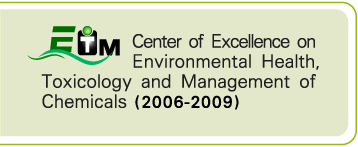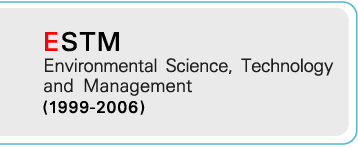Effect of Climate Change on Environmental Factors and Incidence of Pathogenic Bacteria in Ang Sila Coastal Area and Pra-sae Estuary
Asst. Prof. Dr. Karaked Tedsree Faculty of Science, Burapha University This study aimed to determine the effect of climate change on environmental factors and incidence of pathogenic bacteria, namely Vibrio spp., in the Ang Sila Coastal Area and Pra-sae estuary. The results demonstrated that increases in rainfall and water temperature have led to increased amounts… (read more)
 Center of Excellence on Environmental Health and Toxicology (EHT)
Center of Excellence on Environmental Health and Toxicology (EHT)










